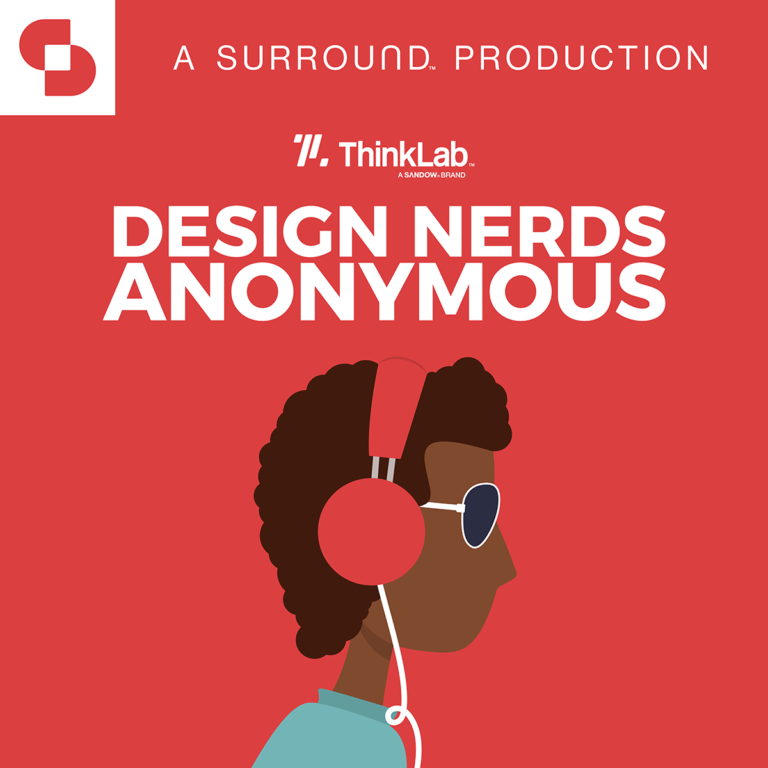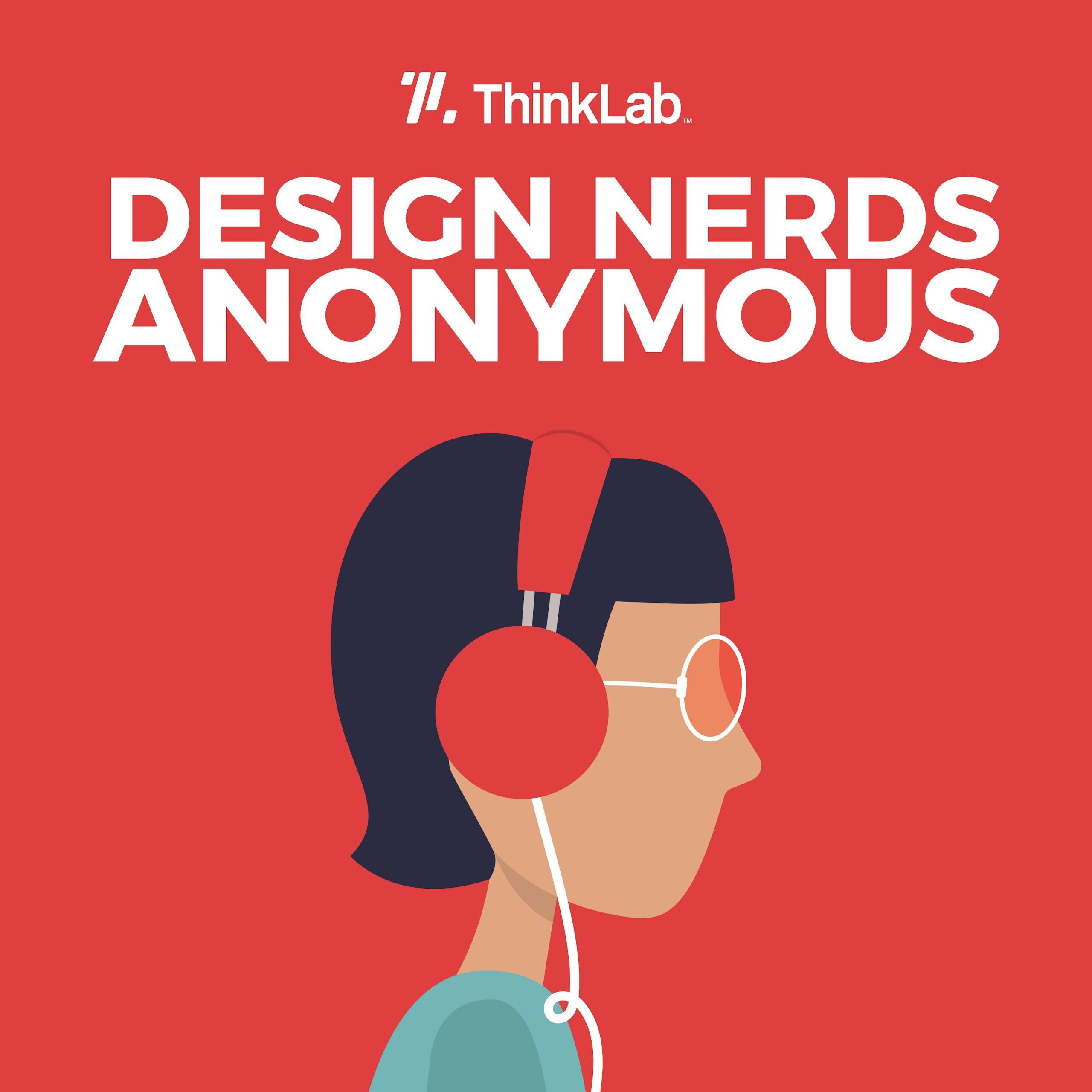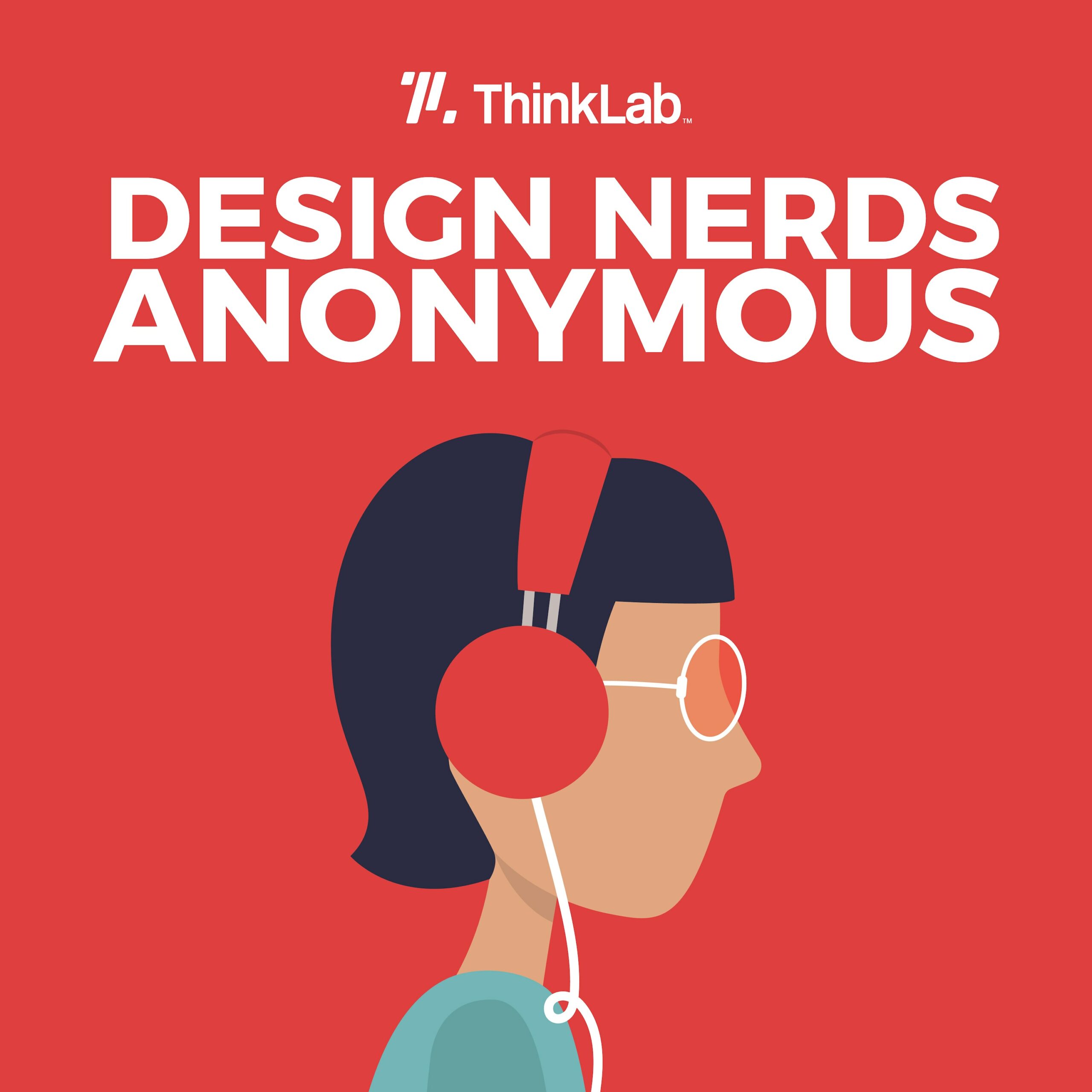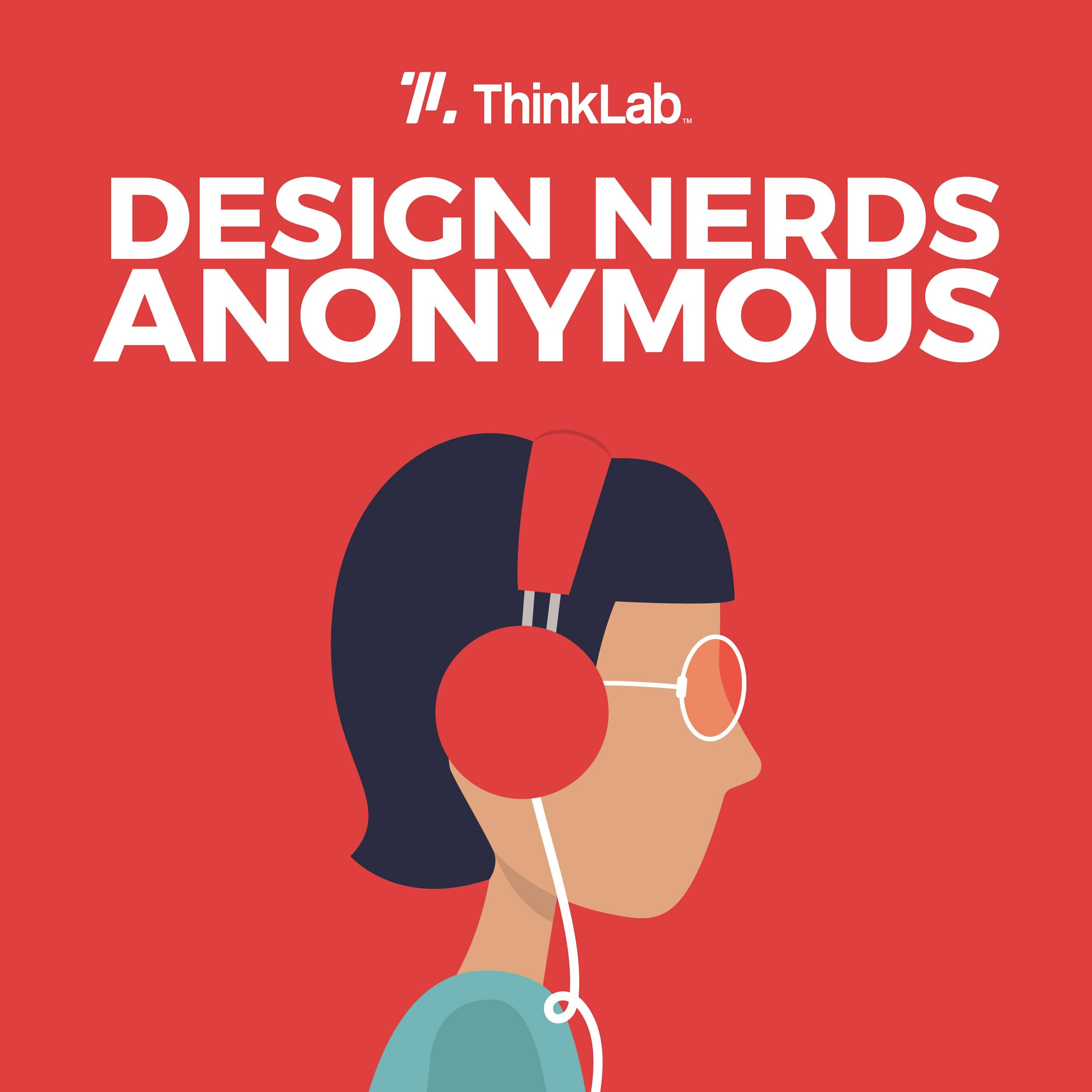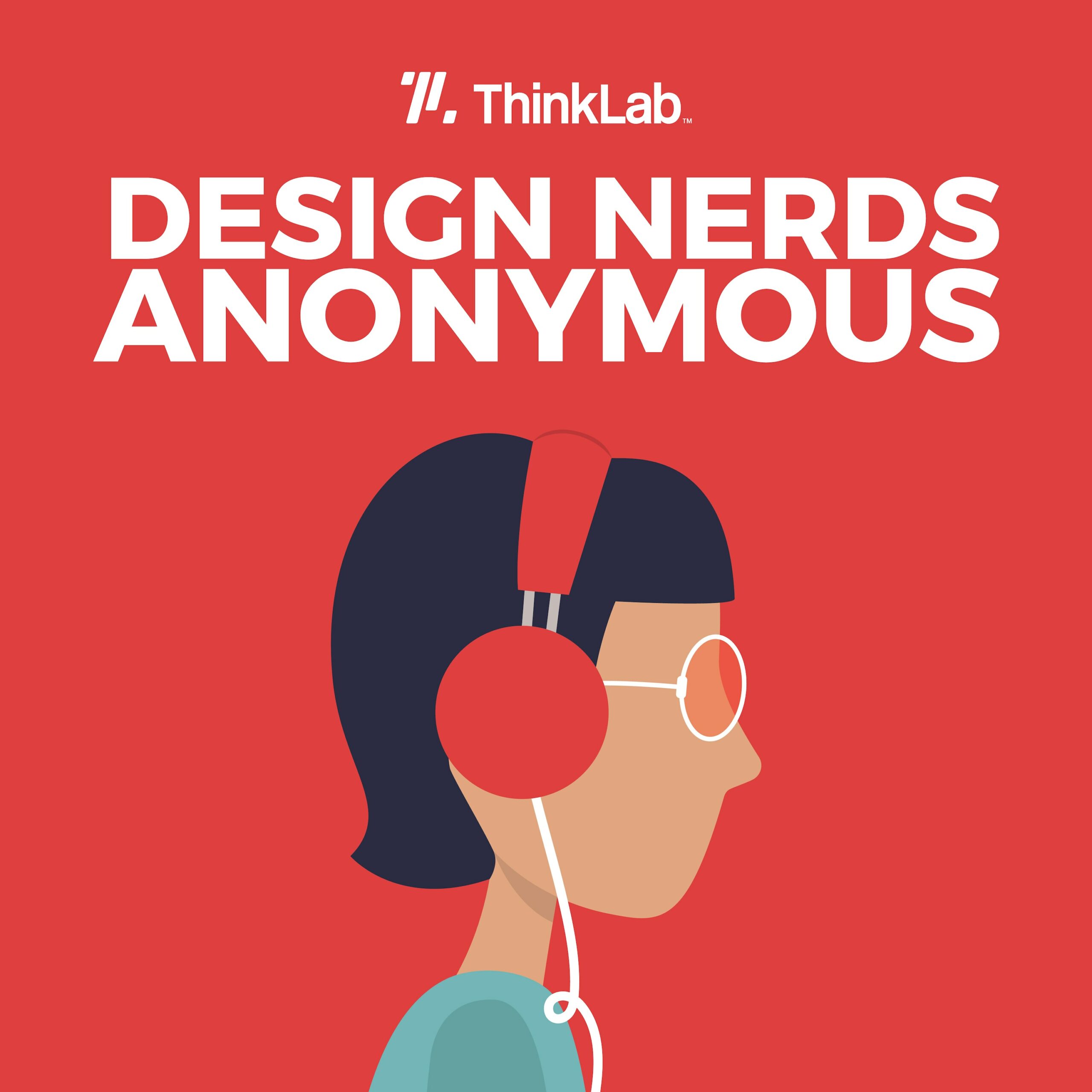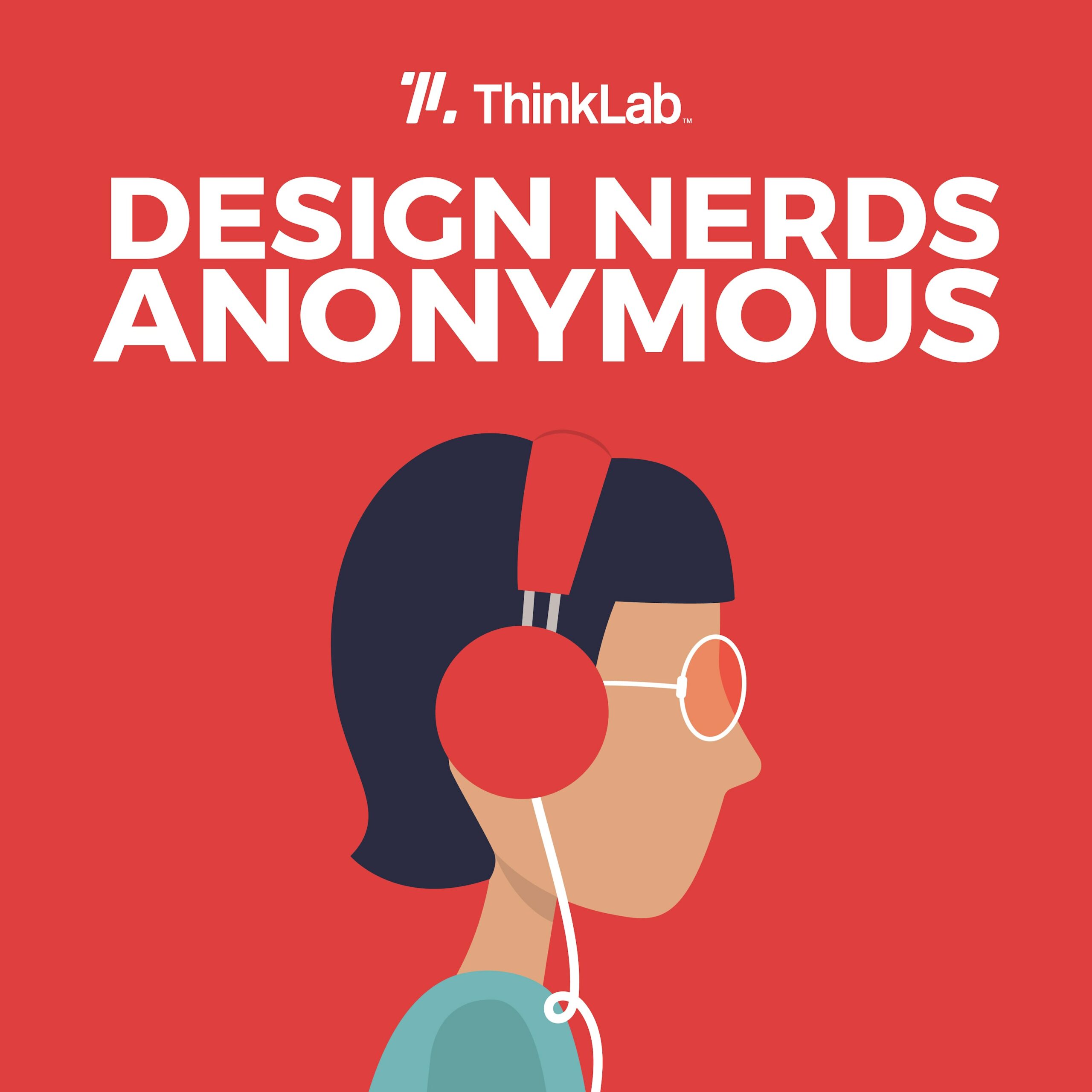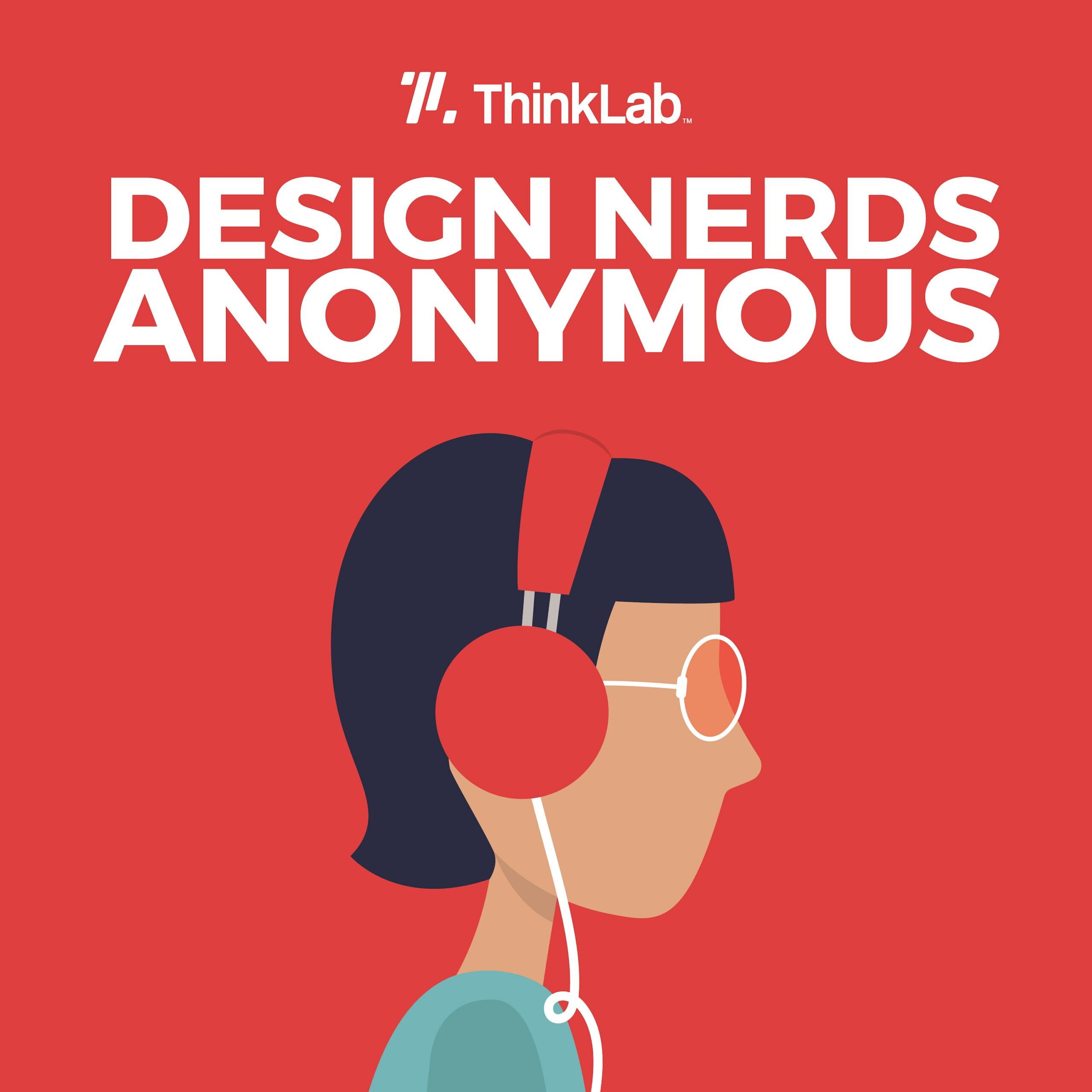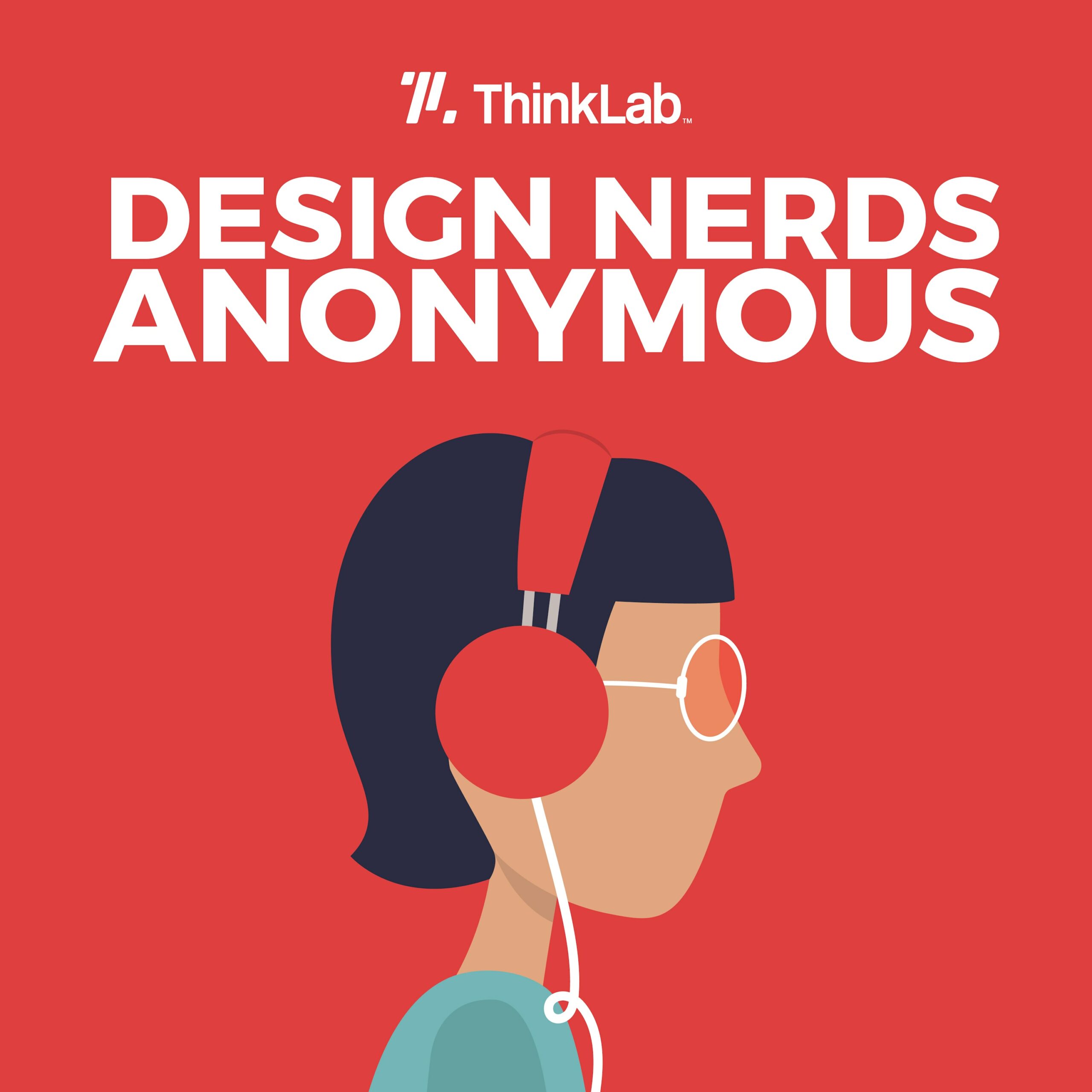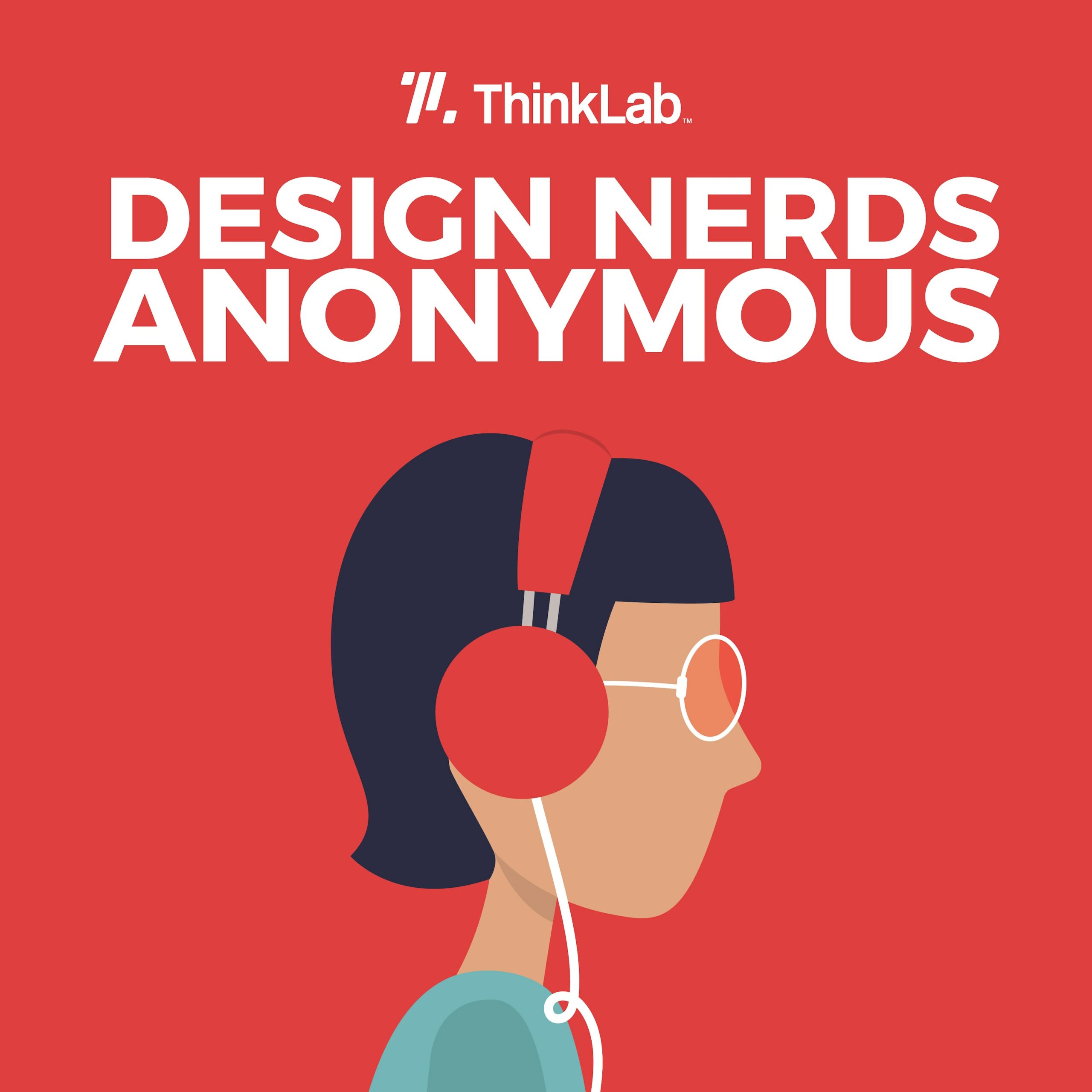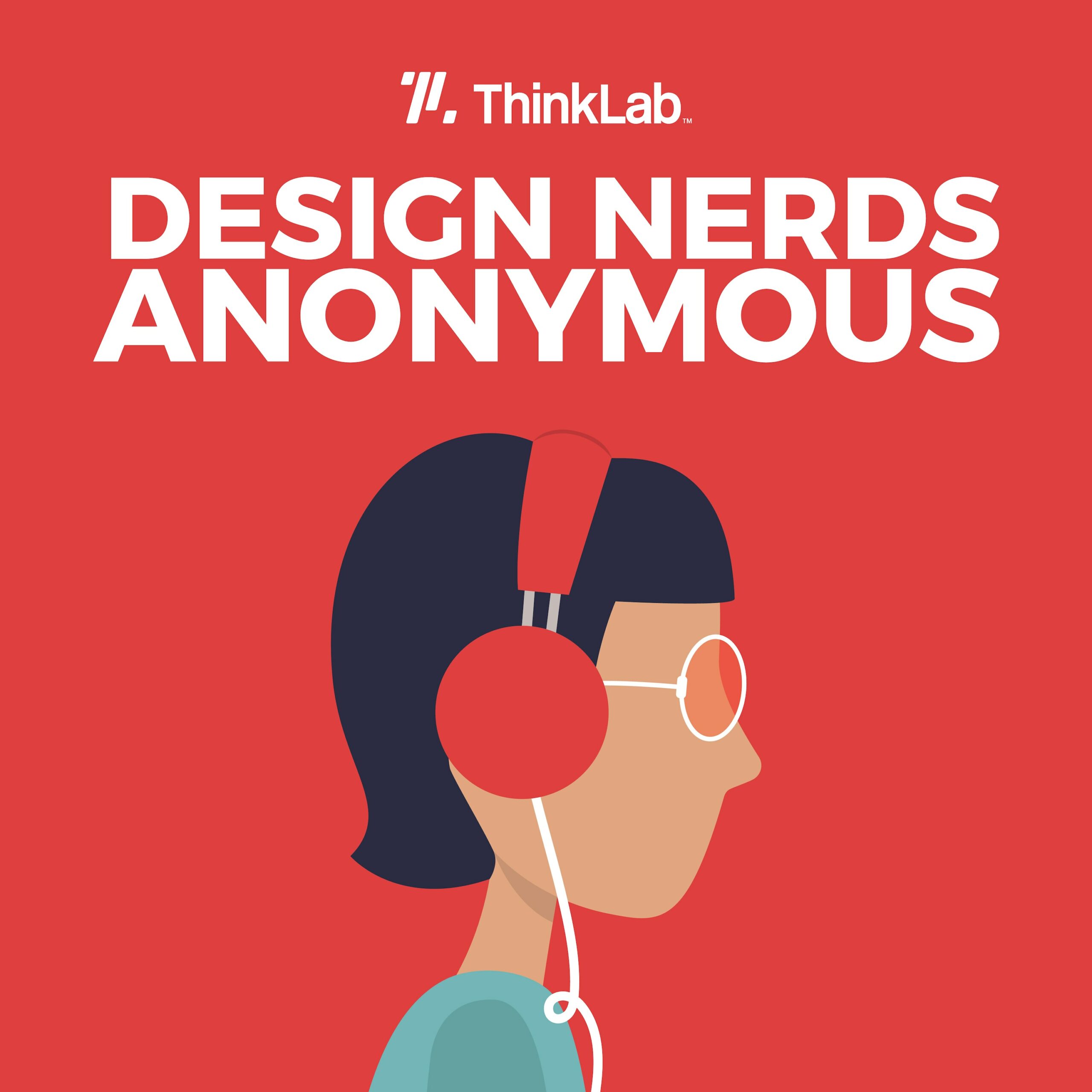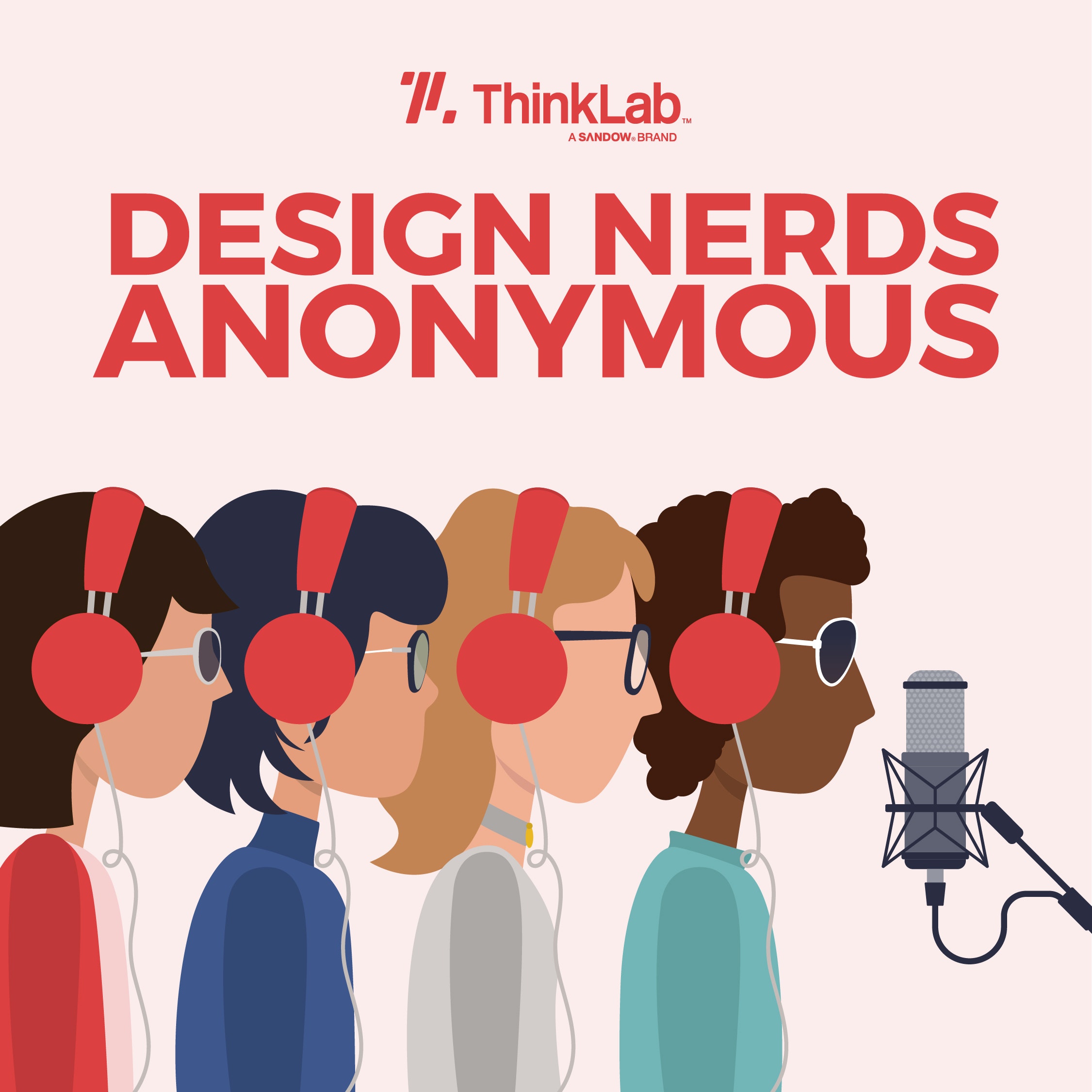In this episode, ThinkLab interviews Dost Bardouille, Director of Sustainability and Corporate Responsibility of Swinerton; and Nina Johnson, Senior Commercial Insights Manager at Armstrong Craven. They discuss the pitfalls of traditional mentorship and explore three additional solutions for career development and upskilling your talent in a modern era.
After listening, you will be able to:
- Identify a key shift impacting career development today
- Compare three new methods used for engagement
- Assess the D.E.I. benefits of champions
- Summarize the 7 considerations needed in designing a shadow board.
In part one, we sit down with Dost Bardouille of Swinerton to evaluate the pitfalls of traditional career development and compare two new methods of connection: sponsorship and champions. And in part two, we sit down with Nina Johnson of Armstrong Craven to identify how implementing a shadow board, a tactic that major fashion house Gucci used, can provide employees with high level engagement and in turn prove long-term success for a company’s growth.
EPISODE EXTRA: Want CEU credit for listening? Take the quiz and earn your certificate of completion.
How it works:
Step 1: Listen to the episode.
Step 2: Visit this link to take a short, 5-question quiz.
*Scoring an 80% or above on the quiz will earn you 0.5 CEU
Step 3: Upon passing the quiz, receive your certificate of completion from CEU provider Teknion.
Accredited for: IDCEC| 0.5 CEU
Connect with our expert guests on LinkedIn:
Tune in to our trailer for more, and subscribe so you don’t miss our upcoming episodes.
Thank you to our sponsors Mannington Commercial, THEMART and NeoCon.
(Please excuse any grammatical errors in this transcript as it was auto-generated from an audio file.)
Amanda: [00:00:00] Welcome to a special episode of Design Nerds Anonymous. I’m thrilled to bring you a replay from our sister show, The Learning Objective. Now if you haven’t discovered it yet, The Learning Objective is a groundbreaking podcast that’s reshaping the way we engage with professional development. It happens to be the industry’s first CEU podcast, offering you the chance to earn those valuable CEU credits simply by tuning in.
So pop in those earbuds, take a walk or mental health break and have a listen. Today, we’re diving into a topic that resonates deeply in this dynamic era, mentorship. As Gen Z’s expectations influence every corner of the working world, connecting with them becomes paramount. And that’s exactly what we’ll explore in this episode.
How mentorship evolves, [00:01:00] why it’s vital for design firms and others, and how to bridge those intergenerational gaps effectively. So why this replay? Because we believe in the power of collaboration and sharing knowledge. So whether you’re a seasoned professional or just stepping into the field, there will be something in here for you.
Get ready to gain insights, spark ideas, and maybe even earn those coveted CEU credits while you listen. But first, a word from our sponsors.
All right, I’m going to do that one more time, just so you have two takes.
Welcome to a special episode of Design Nerds Anonymous. Today I am thrilled to bring you a replay from our sister show, The Learning Objective. Now if you haven’t [00:02:00] discovered it yet, The Learning Objective is a groundbreaking podcast that’s reshaping the way we engage with professional development.
It’s the industry’s first CEU accredited podcast, offering you the chance to earn those valuable CEU credits simply by tuning in. So pop in those earbuds, take a walk and have a listen. Today, we’re diving into a topic that resonates deeply in this dynamic era, mentorship.
As Gen Z’s expectations influence every corner of the working world, connecting with them becomes paramount. And that is exactly what this episode explores. How mentorship can evolve. Why it’s vital for design firms and others, and how to bridge these intergenerational gaps effectively. So why this replay?
Because we believe in the power of [00:03:00] collaboration and sharing knowledge. And the topic happened to align perfectly with this season so whether you’re a seasoned professional, Or, just stepping into the field, there will be something in this episode for you. Get ready to gain insights, spark ideas, and maybe even earn those coveted CEU credits while you listen.
But first, a word from our sponsors.
Jessica: Is mentorship dead? You’ve likely heard of the great resignation, the great renegotiation, or as Gallup has called it, the great discontent. One of the biggest challenges we are hearing not only in our industry, but globally. is the loss and lack of talent and the challenge to retain, recruit, and connect a company’s biggest asset, their people.
Gallup identified increasing employee engagement as one [00:04:00] solution, but according to the annual report conducted by LeanIn.org and McKinsey Co., 78% of companies said that managers are now expected to more to support employee well being yet less than half of the companies provide training for managers on how to minimize employee burnout, increase engagement and make sure promotions are equitable.
So what can leaders and companies do to increase employee engagement? And support their managers. And how do we do mentorship effectively today? In today’s episode, we explore three additional solutions that provide implications of success. In part one, we sit down with Dost Bardwell of Swinerton to evaluate the pitfalls of traditional career development and compare two new methods of connection, sponsorship and champions.
And in part two, we sit down with Nina Johnson of Armstrong Craven to identify how implementing a [00:05:00] shadow board, a tactic that major fashion house Gucci used, Can provide employees with high level engagement and in turn prove long term success for a company’s growth. So whether you are a designer new in your career or a managing principal looking for ways to engage your team, this episode is for you.
I’m your host, Jessica Jenkins, research and content team at ThinkLab.
Dost: I am Dost Bardwell. I am currently the director of corporate responsibility at Swinerton and Swinerton is a U S wide general contractor. I work in the built environment, but I’m on the.
Responsibility side. And I focus on community impact, philanthropy, diverse business partners, as well as our DEI efforts in the company and also sustainability. It’s funny enough. I’m actually an engineer. I started my career in civil engineering through the circuitous path that we all take on our careers.
I ended up [00:06:00] working in development, community development in the international field, ultimately veered towards the social side of ESG in terms of company community relationships. We
Jessica: asked Dost to highlight what traditional career development paths tend to look like, starting with a concept you mentorship.
Dost: I think it’s time to rethink career development and especially as it relates to people of color and women in corporate America, the traditional approaches to development, I’m not trying to marginalize them or discount them. They’re foundational and they’re necessary. So when I think about traditional approaches, mentorship obviously is the first and foremost, it’s always very tactical and technical focused mentee is going to focus on getting coaching and technical skills if they’re lucky and they have a good mentor, they might learn some navigational skills or how to navigate the organizational politics or how to manage [00:07:00] up.
Many mentors themselves are in a place in their career where they’ve ascended to their position because they’re good at the technical skills, not because they’re necessarily good as a manager. So you’re not always guaranteed in a mentorship situation, you’re going to get those organizational political dynamics.
And that’s where we see sponsorship come in.
Jessica: Dost points out that mentorship generally focuses on developing a person’s technical and tactile skills. But can lack in supporting a person’s ability to advance within a company’s organization, which moves us to an alternate approach. Sponsorship.
Dost: Sponsorship is the idea that a senior leader uses their social capital within a company, having ascended to a high level position to advocate for the advancement of an employee, particularly when it comes to promotions, stretch assignments, high visibility of work assignments. It’s critical. It’s important.
It’s going to help an employee get ahead in a company [00:08:00] and their sponsor is going to use not only their experience in the company and their skill set to Guide the sponsee on how to navigate the organizational dynamics of that particular company or organization.
Jessica: While both mentorship and sponsorship have proven successes.
Dost identifies a modern pitfall to both structures, and it begins by identifying a concept called the Ford Man.
Dost: The Ford Man is this concept that most people stayed in the same company their entire career, right? Starting as a junior position, working their way up through the company, they devoted the most productive years to that one company, and in return, they could expect loyalty and support from that company.
So a lot of people in those days retired with a pension, retired with the benefits of having Built a network and a career within one company reality is that’s not the career landscape for most people in this day and age, neither the interest for people to devote their selves to one [00:09:00] company their entire lives, nor the security that comes with.
Devoting herself to one company. And I think that there’s a lot of evidence showing there’s a value from changing companies sectors in order to develop more experiences. I think sponsorship is so limiting is because it’s highly likely. And often at this point, it’s not even frowned upon for a person to change a job every couple of years.
For a while. And so it’s difficult if you’re having a sponsor support you in your career at that company, it’s difficult to then turn around and ask them to help you seek out other opportunities in other sectors, in other competing companies.
Jessica: Dost identified a shift we are seeing in many careers today.
The shift that movement from one company to the next has become for many a natural part of today’s career process. Dost shares a second approach that can overcome this shift.
Dost: Sponsorship has limitations. It’s. Tied to the organization where that sponsor resides, [00:10:00] which fundamentally limits its transferability.
This is where the concept of championing came about because if a sponsor is going to advocate for you behind closed doors, then for that point, when you’re getting the kind of advancement in your career and you find the opportunity that exists outside of that organization, you can’t very well go back to that sponsor and ask them to now help you.
Get a new job at a competing organization. It’s the equivalent to burning a bridge, right? And people need to think in terms of their careers as careers, not just that particular job. So that’s where the concept of championing comes in. So it’s basically a sponsor taking their social capital in the larger network of the industry and applying it to somebody’s career.
So it’s like sponsorship elevated. And when they’re in conversation within their wide network, think about you. As the person that they’ll advise and offer up opportunities at other organizations within other companies. I’ve even had [00:11:00] the support of sponsors and sponsors who turned into champions on my behalf.
They’ve helped me think more strategically about what I’m doing in the current job in that current company, how it will translate externally to other opportunities.
Jessica: In her article, Thank you for the mentorship, but what I need is a champion. Dost points out the concept of championship, and here she examines further how championship can be used to turn transactional relationships.
Dost: think the big piece there is that it requires leaders to look at their role being a mentor, a sponsor, a champion as a more transformational relationship with whomever they’re supporting rather than transactional, because that sponsorship concept does have a transactional aspect about it. I’m a senior leader.
I’m going to put my social capital on the line. I’m going to go to bat for you with the expectation that you’re then going [00:12:00] to live up to expectations and deliver and ultimately make me look good, right? The idea of championing requires people to put that aside a bit and think more transformationally.
How can I use my experience, my leadership to guide somebody’s long term career and transform their job into a career and in such a tight labor market? The transformational part of it will also benefit both parties. I know for our company in particular, we have such a high boomerang rate idea that if you do right by people and you do support them in their career development, it will come back to benefit you in the long run.
Maybe go to another company and get some much needed experience and then come back to that is company, or they follow you to a new company in the future.
Jessica: Champions assist in developing a person’s career beyond the four walls of one company. And can be a solution to some of the changes we’re seeing in career culture today.
But Dost does point out some cautions with
Dost: this approach. Championing has always existed and it’s happening [00:13:00] every day, whether we like to recognize it or not. It’s that it’s happening for one particular demographic, which tends to be white men who have historically been the primary population of corporate America or in the work environment.
And so it’s human nature that we tend to support those that. We see similarities in whether it’s race or gender or likes and dislikes in their social life. And the challenge there is that because women and minorities have been underrepresented in the workplace, it’s almost as if there’s this vicious cycle in which because they’re not present, then they don’t get added into that social network.
So they’re not able to leverage or cash in on the social capital that people are using to apply to majority population.
Jessica: Although there have been historic blind spots to championing, and while those may have existed naturally, Dost believes that champions can be used today to go beyond traditional efforts, both in career development and diversity, equity, and inclusion.
Dost: Where I see championing [00:14:00] really coming into play here is the opportunity to connect. Underrepresented groups to those larger social networks, the social capital that leaders have that extends far beyond their organization, right? Because in this day and age, that is how people are advancing is going to different companies and different organizations.
For the most part. I know that’s obviously it’s a generalization. The opportunity for underrepresented groups to overcome things like the prove it again bias or the tightrope bias is really dependent on having someone who’s going to help lead you through that process. We’re going to get really brass tacks here.
The research shows that companies with a higher rate of diversity and all kinds of diversity perform better, have higher outcomes financially come up with more creative solutions. Nobody’s born with this innate ability to navigate the corporate world.
Jessica: Champions with the right focus can provide an opportunity to empower underrepresented groups, which provides added [00:15:00] benefits to the industry as a whole, especially as we look at industry wide talent gaps.
And according to leanin. org and McKinsey’s annual study, for every 100 men promoted, there’s a 50% Only 87 women are promoted and women leaders are leaving their companies at higher rates than ever. For every woman at the director level who is promoted, two women directors are choosing to leave their company.
Dost: Even with equal rates of men and women joining in junior positions, you start to see women fall off as the career advancement goes. And there’s always this moment where there’s this broken rung where from like mid level individual contributor to now as more senior position, all of a sudden. Huge drop off of that population, whether it’s women or people of color.
It’s really how do you use things like championing to advance those populations, particularly for women who are dropping out of the industry at a much higher rate, a champion is going to [00:16:00] help a person think about how to make their work environment work within their life. That ultra elusive work life balance concept, right?
And sometimes That the work life balance does not exist in the company that you’re in. And so a champion can be the person who’s helping someone find the opportunity that is more fitting for them at that stage of their life and that stage of their career. Because success is really about having the right work environment and the right home life environment and finding a way to marry those two.
Champions kind of transcend the limitations that any one company or any one organization provides. It’s really about supporting your employee, your mentee, your sponsee to find opportunities that are going to work for them. The broader ownership there is for a diverse population, then there’s ultimately diversity that’s going to grow within our industries.
Jessica: Dost explains how championing may not always work internally. [00:17:00] But can work when looking at the industry at large.
Dost: If it’s hard to mandate sponsorship, you can imagine it’s even harder to mandate championship. And it’s kind of an intangible concept. Championship is taking the industry level approach versus an organizational level approach where you’ll find those opportunities may be difficult to look at someone that you’re sponsoring in the company as someone you can also champion their career.
There is the opportunity to look across the industry, finding people you can support, right? Someone that you can help champion in their career. Because they’re not necessarily tied to your organization. When you look for those junior people to help, then you can start playing an advocacy and ally role in bringing them along, maybe bringing them into your organization.
Eventually, if you’re thinking about it from a transformational standpoint,
Jessica: in addition to looking outside of your organization, DOST summarizes how a culture of inclusion. Supports the concept of championing people who are the champion role, it really comes to getting that [00:18:00] transformational view and that longer term view of how you can help benefit and positively impact people’s career rather than saying, well, is this person going to be able to deliver on job X within the next six months?
It’s requiring that longer term. I by no means mean to downgrade the kind of foundational DEI efforts and career development efforts that companies must do, whether it’s around recruitment, retention, career development. What I’m saying is that champions need to start to think about how you move beyond the like old DEI efforts and move to more of the, uh, culture level efforts.
These are principles of culture. And I always think about in terms of the. Culture of inclusion, and so how do you model a culture of inclusion by servant leadership and investing the time practicing yourself and also teaching kind of mid level career people that being a leader and becoming a leader requires being a different type of leader for all.
different types of employees, right? And then also championing, not just helping someone increase their salary, but helping to teach them about wealth [00:19:00] generation, right? That’s a huge aspect of diversity. Um, and creating more equitable environments is being more transparent about money and helping people understand how to move their career into a wealth generation type of situation, right?
Jessica: And if you’re looking for a champion or a company that supports champions, Dost gives one piece of advice.
Dost: Pay attention to how they talk about it. Are they thinking in terms of creating culture of inclusion and creating environments where they’re going to ensure you have exposure to leadership to be able to network and be able to build those kind of relationships of sponsorship and championship yourself?
Jessica: Lastly, we asked Dost why creating a culture of champions is so important.
Dost: It’s those little things about how you can create more opportunities and more spaces for, for your staff to shine and also for other people at those country events and other networking events to shine. Um, because fundamentally it’s really a question of like, how do [00:20:00] we get to that now?
Not the black and white, but the nuances that are required for human interaction.
Jessica: Champions can benefit both the individual and the overall industry, but they are much more organic. Thank you. And not truly designed to become a program on the corporate level. So we asked Nina Johnson to introduce us to a different approach, one that is structured and designed for implementation.
Here is Nina.
Nina: I’m Nina Johnson, and I’m a senior commercial insights manager at Armstrong Craven. Armstrong Craven are an executive search and talent consultancy, and we’re headquartered in the UK, but we have offices in the US. Asia Pacific and in Europe. And basically we provide research driven talent solutions.
So that might be talent mapping, talent pipelining, a more flexible version of executive search, and then also talent insights, or it’s also [00:21:00] called talent intelligence. And my role within Armstrong Craven is to support the development of the business by monitoring some of the key trends that are impacting talent.
It’s very interesting to look into different companies and to be talking to different people in different regions to understand what’s actually happening on the ground. With her
Jessica: background in talent success, Nina identifies one larger challenge seen across multiple industries and facing most companies today.A challenge that plays a role in retention and the sustainability of a company.
Nina: The biggest challenge that organizations What we’re perhaps facing at the moment is an increased transparency. Need to be authentic is very important because everything that they are doing or saying can be analyzed, cross referenced.
Everyone has a voice. It’s possible now for people to compare [00:22:00] and contrast what’s being projected versus what’s actually happening and particularly using tools like Glassdoor, et cetera, where people can. Comment on how they find the organizations and that’s in the public domain. That’s for everyone to view.
I think there’s a sort of push and pull between strategy and vision and the sort of ideal state that organizations want to project outwards. And the reality of being an employee in that organization and actually having a voice. to be able to prove or disprove what’s being said. I think that sort of transparency piece is a big challenge for organizations at the moment.
Jessica: But what role does transparency play in retention and the success of a company?
Nina: I think it links into two of the main key themes at the moment, which is really sustainability, not only sustainability from an environmental perspective, but the sustainability of businesses. And one [00:23:00] businesses operating in, in very complex and fast moving fluid markets, having to adapt and be very agile to be able to have a future essentially, and continue to produce whatever they produce or provide the services that they provide.
And then secondly, another Big theme is around inclusion, which obviously is a key part of the whole DEI package. It’s the one that will make people stay at an organization and. It’s the one that will help people unlock the different perspectives that are needed in order to develop a future business strategy.
Jessica: Identifying that transparency plays a key role in a company’s success today and for the future, Nina introduces us to Shadow boards and the role that they play in creating transparency around authenticity and long term diversity.
Nina: And I think the shadow boards [00:24:00] really tap into both of those things because shadow boards provide an opportunity on a platform for different voices and a chance for people to feed into the future of their organization.
Um, and also from a sustainability perspective, it’s those new ideas. It’s the fresh, it’s the fresh thinking can keep a business relevant, really. And we were interested in shadow boards because there’s not a lot written about them. And then started researching, could see that a few companies were doing forms of shadow boards, but actually it was few and far between.
And it seemed like such a good idea for organizations to incorporate into their DEI strategy for a start, but just generally in terms of tapping into and engaging their workforce. We asked
Jessica: Nina to help define a shadow board for us.
Nina: So a board is a [00:25:00] group of people that are directing the company, they’re making decisions, they’re responsible for controlling the direction of the company.
So a shadow board or they’re also called mirror or advisory boards, is a secondary group of people who are drawn from different backgrounds. They’re not directors. They’re not necessarily leaders within the organization. The aim is to have a group of people that can bring in those different perspectives and fresh thinking.
So that essentially is what a shadow board is. Although I couldn’t find any formal definition
Jessica: of it. When Googling shadow boards, it is likely you will find the success story of major fashion house Gucci. Gucci created an internal shadow board of youth in 2015 to address the company’s ability to stay relevant with consumers.
Nina: That does seem to be the most common iteration of shadow boards is a group of younger [00:26:00] employees. And there’s the famous example of Gucci and the CEO setting up a shadow board of under 30s, feeding in, Ideas, et cetera. Oftentimes that would be a group of younger employees who were obviously in less senior roles, potentially from a variety of different functions across the business, a variety of backgrounds to create a kind of different perspectives.
Jessica: Since the creation of the Gucci shadow board in 2015, Gucci sales have grown by 136%. Now, while the board creates diverse perspectives and tackles real business challenges, It also promotes and exposes talent that may otherwise be overlooked. So what do Gucci and professional service giants like KPMG have in common?
Their use of a shadow board. In her white paper, ESG and the Role of Shadow boards, Nina researched and met with companies across multiple industries. [00:27:00] All of which had created successful shadow boards, KPMG being one of them.
Nina: So KPMG started their version of a shadow board in 2018 and it’s still going now.
It’s been through different revisions over that time because they have a large proportion of employees that are under 35. They wanted to make sure that those voices were feeding into their strategy. As a business, but the leadership team also wanted to be challenged. They wanted their thinking to be challenged.
And I think that’s a key point around shadow boards is leadership have to be open to, to actually having their thinking challenged in order for it to work. And they. Basically, draw people in from the different organizations, they serve a sort of defined term, they focus on specific topics, and the topics could be quite broad strategic topics, such as future of work, [00:28:00] improving talent attraction, or ESG as one of them, they discuss them, they seek ideas out from their different groups of peers within their organizations and feed information back into So The global leadership team.
So I think it’s successful in the sense that it does challenge leadership, but it’s also a great development tool for the employees. It’s, it’s an amazing opportunity for them to start thinking about the strategic issues, feed in their thoughts, understand more around. How decisions are made and boards and how businesses run come up with ideas and sort of been noticed and been much more visible as a result of these kinds of initiatives, which has led to then promotion opportunities for them.
And they weren’t people that were considered to be on a sort of high potential path or anything, but they solved a major business. challenge and therefore ended up developing themselves in terms of [00:29:00] their career as a result of having a voice. I think it’s a two pronged benefit to it for the people in the shadow board and also obviously for the organization and the leadership team.
Jessica: We asked Nina to help identify the considerations needed to create a successful board, one that engages employees, builds transparencies, and creates long term sustainability of a company. The key success? is around structure and a clear defined mission that is supported by senior level team members.
Nina: These considerations came from talking to people who have actually successfully set them up and we pulled it all together to figure out what the real defining points were. Firstly, it was around being clear on the purpose. So why do you want a shadow board? They have different benefits from setting them up, but you need to be really clear on What the purpose is for your organization and then communicate that.
The second point really is around having someone senior, a senior [00:30:00] sponsor who can help provide access to different networks, can provide information, and you would have that on a normal board, you would have someone doing that as well. So it’s the same setup as a normal board, really, to make sure that people have what they need in order to be able to function on The ones that have worked really well have been very structured.
So they’ve had a really defined structure. They have a really great, successfully set them up. Um, we sort of pulled it all together, um, to figure out what the real defining points were. Um, firstly, it was around being clear on the purpose. So why. Why do you want a shadow board? As I said, they have different, they have different benefits from setting them up, but you need to be really clear on what the purpose is for your organization and then communicate that secondly as well.
[00:31:00] Um, the, the second point really is around having someone senior, a senior sponsor who can. Help provide access to different networks can, um, provide information and you would have that on a, on a normal board, you would have someone doing that as well. So it’s the same setup as, as a normal board really, to make sure that people have what they need in order to be able to, to function on the board.
Uh, it’s. The ones that have worked really well have been very, very structured. So they’ve had a, a really defined structure. Um, they have a, a really great, um, onboarding process for the people joining the board. They have defined terms for how long people will serve on the shadow board. Everything is clear.
They have defined terms for how long people will serve on the shadow board. [00:32:00] Everything is, is clear. Uh, so there’s no. There’s no confusion. It’s expectations are clear around that. I think also the structure is important so that the board can keep evolving. So factoring in review regularly and also gathering feedback from the different people involved in the shadow board.
Training and support for shadow board members so that they can feel comfortable reading board papers, for example. One thing I think comes to mind when you think about discussions in the boardroom is that there might potentially be some conflict. So how to manage conflict and ensure it doesn’t have a negative impact on people’s confidence or on their relationships within the organization.
And finally, clarity around the remit of a shadow board member. They’re not being expected to be the voice of everyone of their age or [00:33:00] of their background. It’s their individual view that’s the important bit and Ensuring that they’re aware of that and then they are being honest and then they’re not trying to filter in a huge range of information from a lot of people that it gets a bit diluted, but really it’s about their individual view.
Jessica: And lastly, if you are a leader considering a shadow board, based on her research, we asked Nina what the most important aspect of building this board would be. And similar to becoming a champion, it is all about authenticity.
Nina: I think the most important thing is to not do it as a token gesture.
So it’s about the motives behind it. Why do you want to set up a shadow board? I think it with initiatives like this, or even calling it an initiative could be seen in a negative light, but it has the potential to actually have a negative impact if you don’t do it properly. And if you don’t do it from the right place.
So a key part of [00:34:00] that is really having genuine commitment from the leadership team that they will listen to ideas that come out of the shadow board and they’re prepared for their assumptions and their thinking to be challenged a bit, because that is the point of gathering different views is to challenge that thinking.
You need buy in from the leadership team. And I think for some of the shadow boards, there was genuine excitement that and genuine desire for this too. be feeding through into strategy. I think that is essential. And I think the other side of it is treating it as seriously as you would treat Setting up any senior leadership team or any official board of directors.
So having a proper structure in place, as I mentioned, with governance around how it’s run, having clear roles and responsibilities, making sure people have the right training, et cetera, and access to the right information. [00:35:00] I don’t think it’s something that would work well if done in a half hearted kind of way.
I think it needs proper focus, investment of time and resources, and the commitment to let it evolve over time. The most successful shadow boards have changed as they go along, to better meet the needs of the business and to better Unlock the potential that’s there from getting those new perspectives.
Amanda: Wow. I hope you enjoyed that episode as much as I did. Now, if you’re hungry for more thought provoking discussions and want to stay ahead in your professional journey, make sure you follow the Learning Objective podcast, wherever you usually listen to your audio content. There are so many great topics already available if you scroll their feed and better yet.
It’s a year round podcast launching monthly. So it’s a seamless way to turn your [00:36:00] podcast passion into professional growth. Or if you want to learn how to sponsor an episode, send us a DM at ThinkLab on LinkedIn, Instagram, or through our website at thinklab.
design. If you’re eager to rack up those valuable CEU credits, here is the Learning Objective Sponsor for this episode, Teknion, to share instructions on how to obtain your credit.
Take it away, Leigh.
Leigh: Now, three of the things that stood out to me from this episode are first, mentorships. It’s a great first step, but it doesn’t answer the changes to our career paths that we are seeing in the industry.
Second, champions. They can be an awesome answer for both leaders and younger staff. To be able to turn relationships from transactional to transformative. A shadow board is a great tool for upskilling and retaining talent, increasing your diversity within your workforce and in turn providing long term success for a company.[00:37:00]
Now I think back to my first day in our industry. I was brand new and I was greeted by a powerful team of mentors at Technion. We’re a family owned, privately held business that still makes what we sell. And I recognized in that moment what it means to our clients, and our planet, and to each other. And we are true co creators with our clients.
That we listen, we share our knowledge, and we pinpoint the solution aligning both brand and culture to really anticipate the future of work together. Every single project is a collaboration to us. And I realize that this makes Technion truly unique and special. Many of my clients have become mentors and friends.
And, truly vice versa, it’s one of the industry’s most unique strengths. And to my mentors at Technion and beyond, thank you so much for inspiring me. To obtain credit for listening, simply visit the show notes of this episode and click the link to take a short quiz. And that’s it.
Amanda: Thanks for listening and learning with us today. The Learning Objective and Design Nerds Anonymous are both [00:38:00] Surround Podcast Network original productions. You can check out more shows from Surround at surroundpodcast.com. This episode of The Learning Objective and this whole season of Design Nerds Anonymous has all been produced and edited by Sandow Design Group.
Special thanks to our podcast production team, Hannah Viti, Wize Grisette, Samantha Sager, and Rachel Senatore.

